Two capacitros of capacity 6μF are charged to 100 V and 50 V separately and connected as shown. Now all the three switches S1,S2 and S3 are closed.

Charges on both the capacitors in steady state will be (on 6μF first)
400μC,400μC
700μC,250μC
800μC,350μC
300μC,450μC
The correct Answer is:B
Step by step video, text & image solution for Two capacitros of capacity 6 mu F are charged to 100 V and 50 V separately and connected as shown. Now all the three switches S_(1), S_(2) and S_(3) are closed. Charges on both the capacitors in steady state will be (on 6 mu F first) by Physics experts to help you in doubts & scoring excellent marks in Class 11 exams.
Related Playlists
- BOOK - DC PANDEYCHAPTER - ELECTROSTATICSEXERCISE - Matrix Matching2videos
ELECTROSTATICS
- BOOK - DC PANDEYCHAPTER - ELECTROSTATICSEXERCISE - Integer17videos
ELECTROSTATICS
- BOOK - DC PANDEYCHAPTER - ELECTROSTATICSEXERCISE - JEE Advanced44videos
ELECTROSTATICS
- BOOK - DC PANDEYCHAPTER - ELASTICITYEXERCISE - Medical entrances s gallery21videos
ELASTICITY
- BOOK - DC PANDEYCHAPTER - EXPERIMENTSEXERCISE - Subjective15videos
EXPERIMENTS
Knowledge Check
- Question 1 - Select One
Two capacitors of capacity 6μF and 3μF are charge 100V and 50V separately and connected as shown in Now all the three switches S1,S2, and S3 are closed.
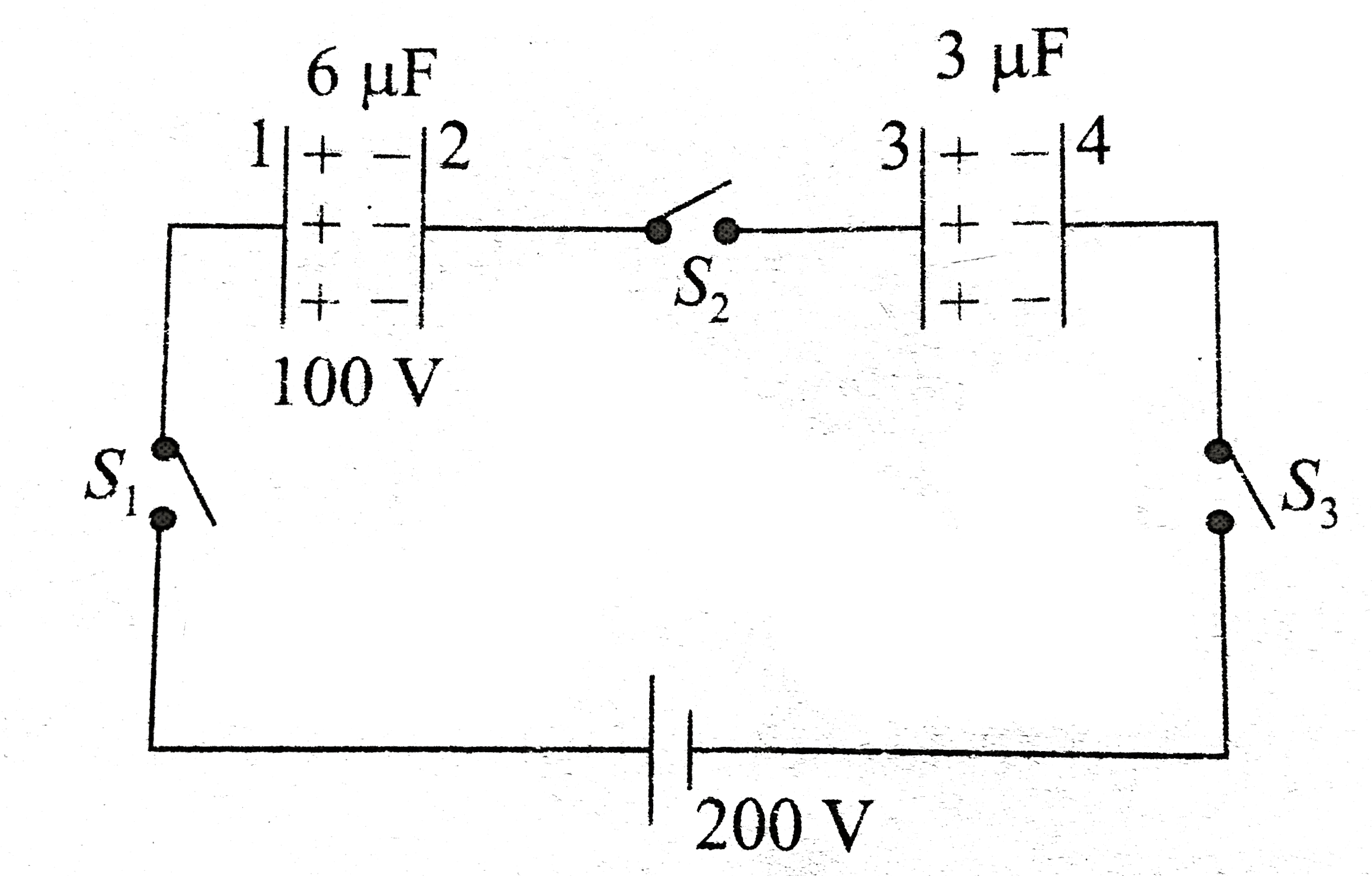
Charge on the 3μF capacitor in steady state willl be.A400μCB700μCC800μCD250μC - Question 1 - Select One
Two capacitors of capacity 6μF and 3μF are charge 100V and 50V separately and connected as shown in (Fig.4.201.) Now all the three switches S1,S2, and S3 are closed.
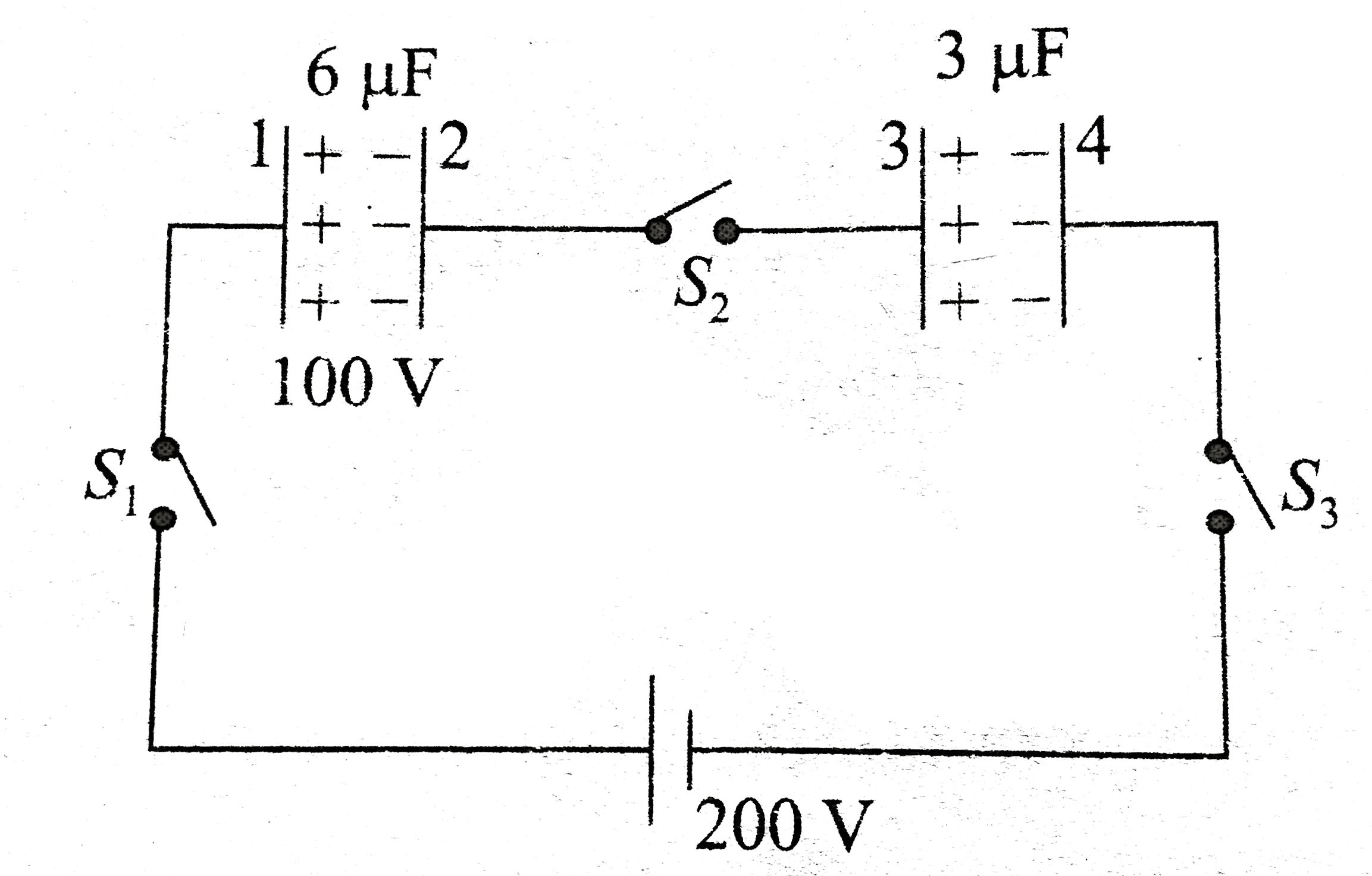
Charge on the 6μF capacitor in steady state will be.A400μCB700μCC800μCD250μC - Question 1 - Select One
Two capacitor of capacity 6μF and 3μF are charged to 100 V and 50 V separately and connected as shown in figure. Now all the three switches S1,S2,andS3 are closed.

Charges on 6μF And 3μF capacitors in steady state will beA400μC,400μCB700μC,250μCC800μC,350μCD300μC,450μC - Question 1 - Select One
Two capacitors of capacity 6μF and 3 muFarechar≥100 Vand50 Vseparatelyandco∩ectedasshown∈NowallthethreeswitchesS_(1),S_(2),andS_(3) are closed.
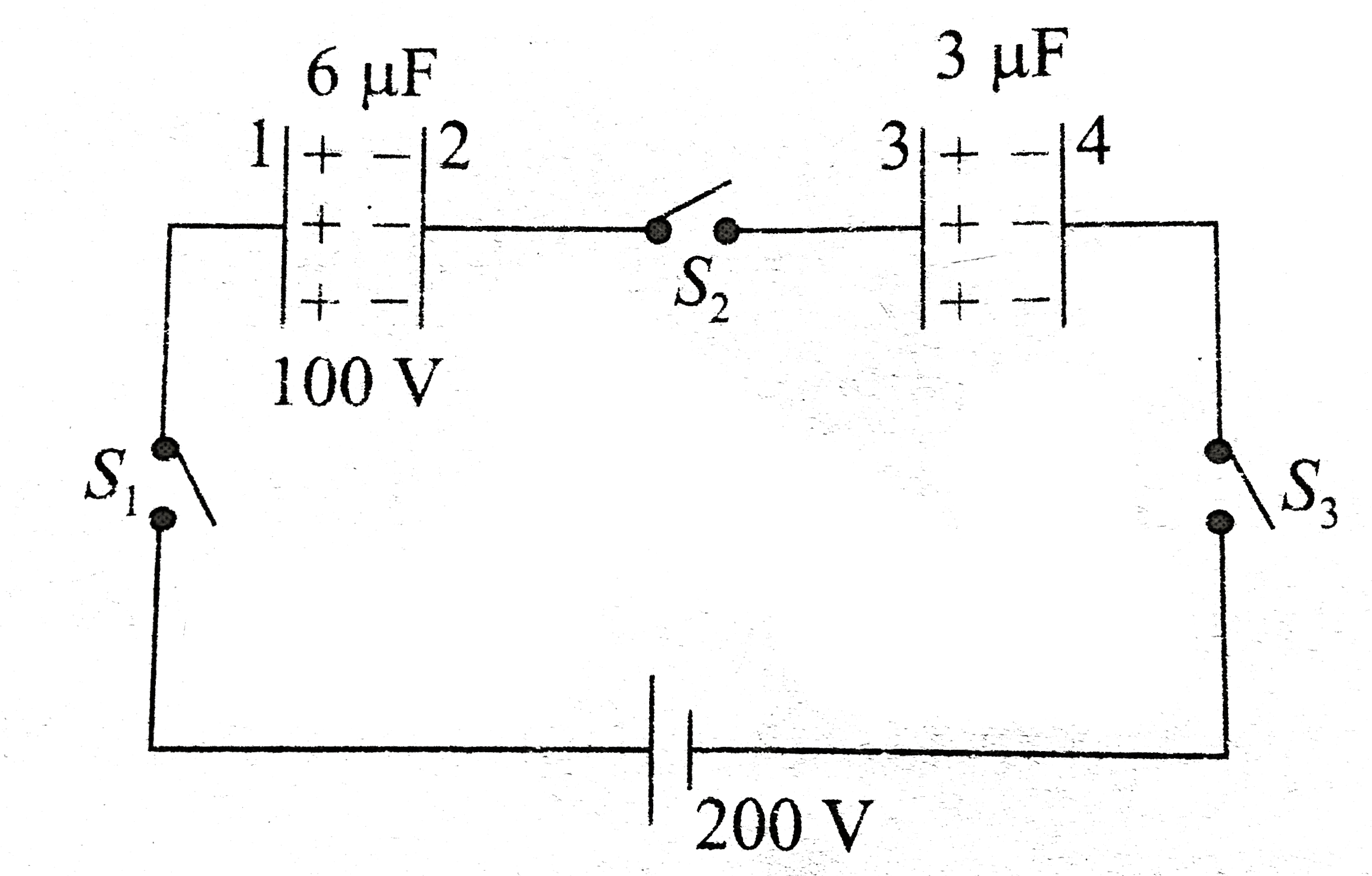
Which plates form an isolated system?Aplate 1andplate4 separately .Bplate 2 and plate 3 separately .Cplate 2 and plate 3 jointly .Dnone of these. - Question 1 - Select One
Two capacitros of capacity 6μF are charged to 100 V and 50 V separately and connected as shown. Now all the three switches S1,S2 and S3 are closed.

Suppose q1,q2 and q3 be the magnitudes of charge flown from switches S1,S2 and S3 after they closed. ThenAq1=q3 and q2=0Bq1=q3=q22Cq1=q3=2q2Dq1=q2=q3 - Question 1 - Select One
Two capacitor of capacity 6μF and 3μF are charged to 100 V and 50 V separately and connected as shown in figure. Now all the three switches S1,S2,andS3 are closed.
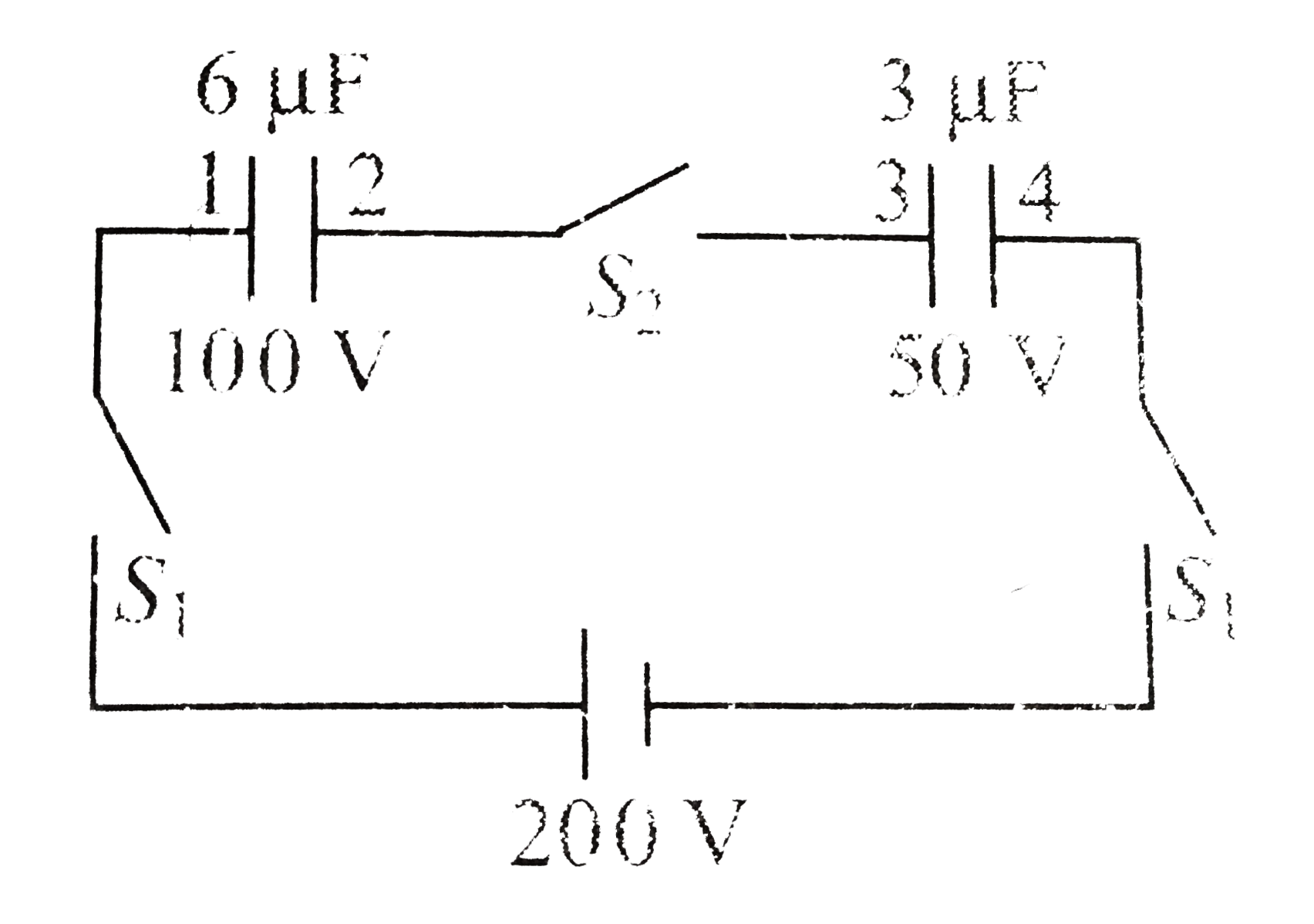
Let q1,q2,andq3 be the magnitudes of charges flown from switches S1,S2,andS3 after they are closed. ThenAq1=q3andq2=0Bq1=q3=q2/2Cq1=q3=3q2Dq1=q2=q3 - Question 1 - Select One
In the circuit shown in the figure, if switches S1 and S2 have been closed for a long time, then charge on the capacitor.
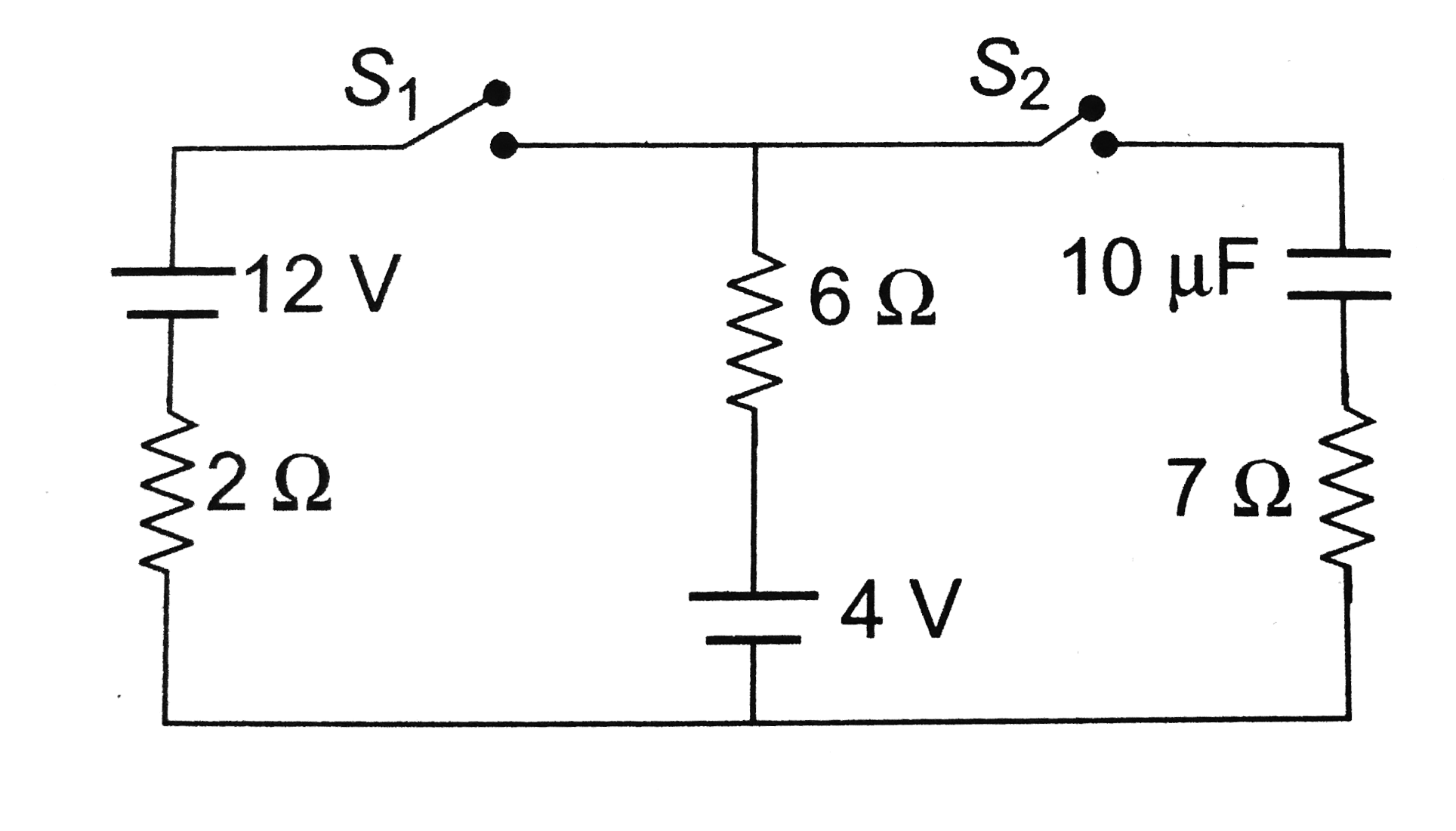 Ais 100μCBincreases to 200μC if one third of the gap of the capacitor's plates is filled with a dielectric (K=2) of same areaCboth (a) and (b) aboveDcharge on the capacitor remains unchanged if one third of the gap of the capacitor's plates is filled with a dielectric (K=2) of same area.
Ais 100μCBincreases to 200μC if one third of the gap of the capacitor's plates is filled with a dielectric (K=2) of same areaCboth (a) and (b) aboveDcharge on the capacitor remains unchanged if one third of the gap of the capacitor's plates is filled with a dielectric (K=2) of same area. - Question 1 - Select One or More
Two capacitors C1 and C2 are charged to same potential V, but with opposite polarity as shown in the figure. The switches S1 and S2 are then closed
 APotential difference across two capacitors are same and is given by (C1−C2)VC1+C2BPotential difference across two capacitors are same and is given by (C1+C2C1−C2)VCRatio of final energy to initial energy of the system is given by (C1−C2)2(C1+C2)2DRatio of final energy to initial energy of the system is given by (C1)2(C1+C2)2
APotential difference across two capacitors are same and is given by (C1−C2)VC1+C2BPotential difference across two capacitors are same and is given by (C1+C2C1−C2)VCRatio of final energy to initial energy of the system is given by (C1−C2)2(C1+C2)2DRatio of final energy to initial energy of the system is given by (C1)2(C1+C2)2
Similar Questions
The charge in the 2μF capacitor at steady state is
 View Solution
View SolutionIn the circuit shown in figure C1=1μF and C2=2μF. The capacitor C1 is charged to 100V and the capacitor C2 is charged to 20V. After charging then are connected as shown. When the switches S1,S2 and S3 are closed, the charged flowing through S1 is
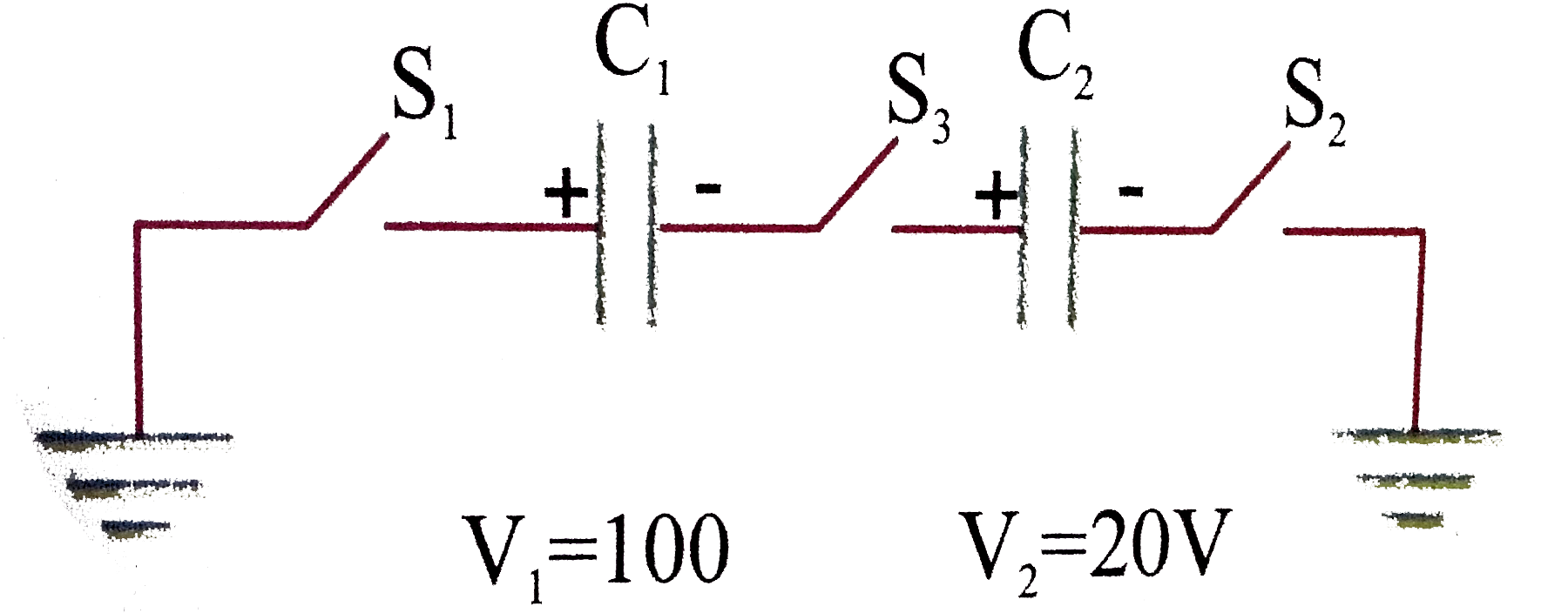 .View Solution
.View Solution

